While the 2015 Dodge Challenger didn’t change from the 2014 model year as much as some critics had hoped, the exterior refinements made to the newest Challenger do a fine job of evolving the model and differentiating it from the 2008-2014 models. These exterior changes are focused mostly on the front and rear end, and the look of the 2015 Challenger was inspired by the 1971 Challenger. Because of that, I wanted to find a 1971 Challenger to compare head to head with my 2015 Challenger test car and Mr. John Dorset of Brighton Michigan was kind enough to set time aside for me to get pictures of his gorgeous Plum Crazy 1971 Challenger Convertible with my bright green test car.
In addition to showing the evolution of Mopar muscle cars over the course of some 44 years, these pictures do a great job of showing how well the modern Chrysler design team took the look of the original Challenger and applied that look to the 2015 Challenger. When viewing these pictures and reading through my head to head comparison below, you will need to ignore the fact that one car is a coupe and the other is a convertible, but other than that main difference – it really is remarkable how much the old and new Challenger are alike.
The Front End
The front end of the 2015 Dodge Challenger is really the centerpiece of the refresh, with a design that is very similar to the 2008-2014 models, but with some obvious changes to set the 2015 models apart. My test car is a Scat Pack model with the entire grille painted black so it is very hard to see the 1971-inspired dual opening grille, but it is there and it is well interpreted from 1971 to 2015. The elongated grille opening with rounded ends is passed down from the original generation, as is the quad headlight design – although you can see that the ’71 has four halogen headlights while the ’15 has high tech LED-trimmed projection headlight.
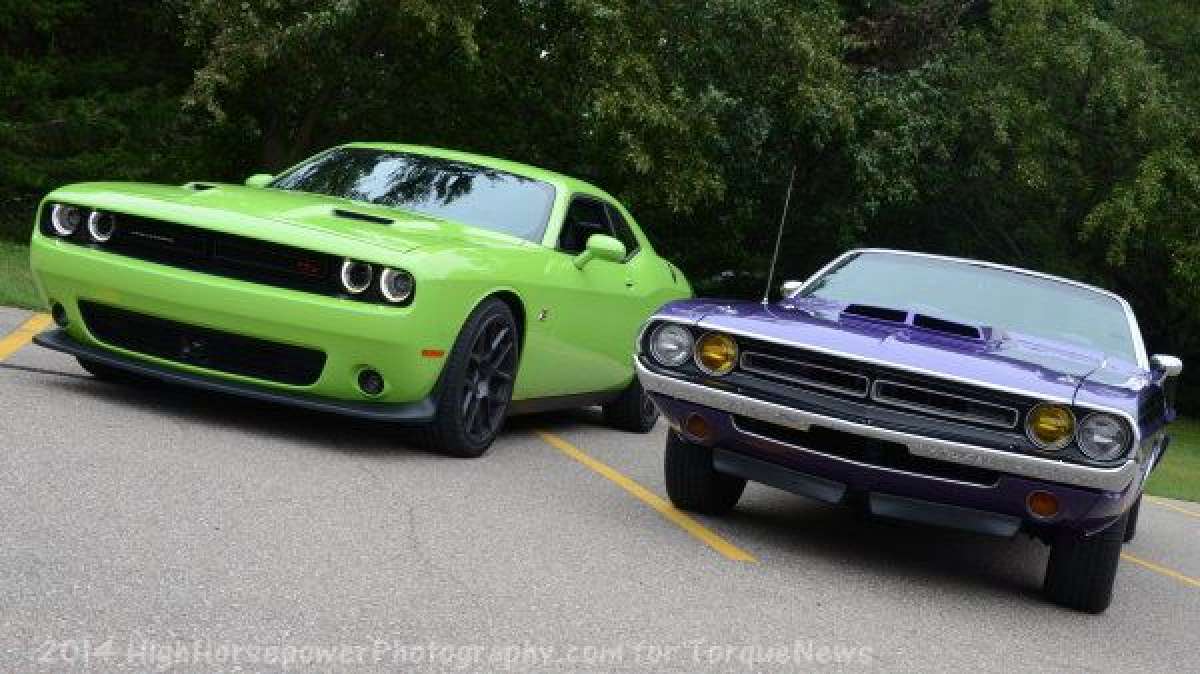
While the shift from steel bumpers to the all plastic front fascia has done away with the bright chrome unit on the front of the 1971 Challenger, the opening below the bumper area of both cars is similarly shaped, although the 2015 opening is much larger. Also similar in design is the location of the fog lights on the 2015 Challenger and the front turn signal indicators on the 1971 Challenger and while the front fascia reaches much further down on the new Challenger, both cars wear a flat black chin spoiler that are similar in their goals yet very different in their design.
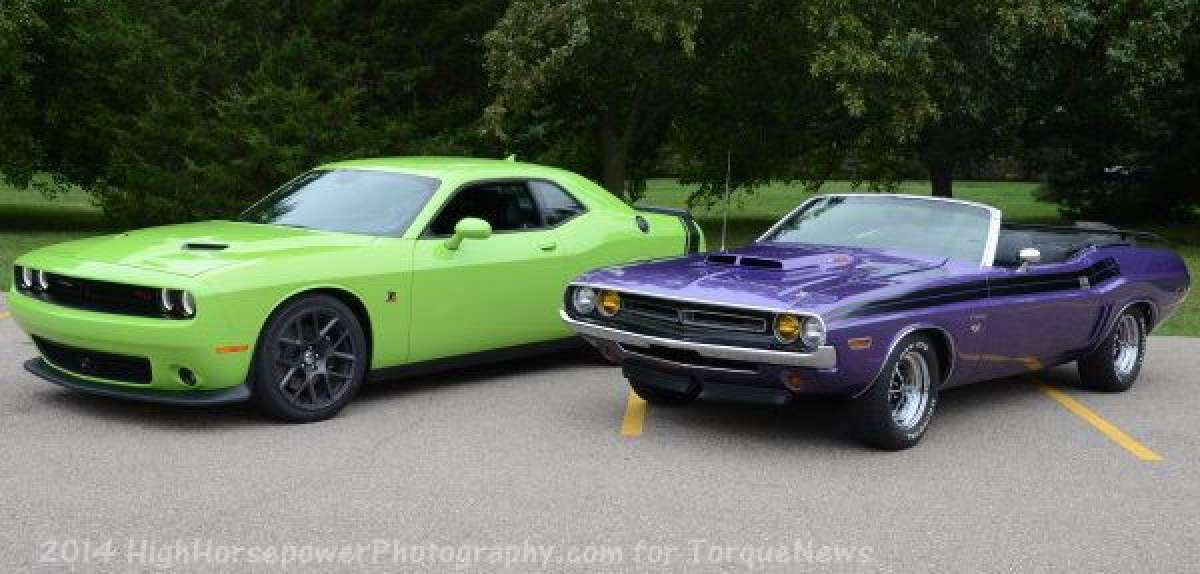
John’s 1971 Challenger has a custom front hood with a T/A style scoop while the 2015 Challenger has the Power Bulge hood that was also offered on the 1971 Challenger. Most interestingly, even though the 2015 Challenger is a much bigger car, the grille and hood of these two cars are at a very similar height.
The Side Profile
On the sides, the 2015 Dodge Challenger looks much bigger than the 1971 Challenger, but the basic body line that extends from the headlight straight back to where it kicks up over the rear wheels is shared by both muscle cars. Both cars feature a pedestal style side view mirror, handles mounted high on the door and unique flip up style gas doors (although on different sides), and if not for the fact that the ’71 is a convertible, the two would share a basic greenhouse shape as well.
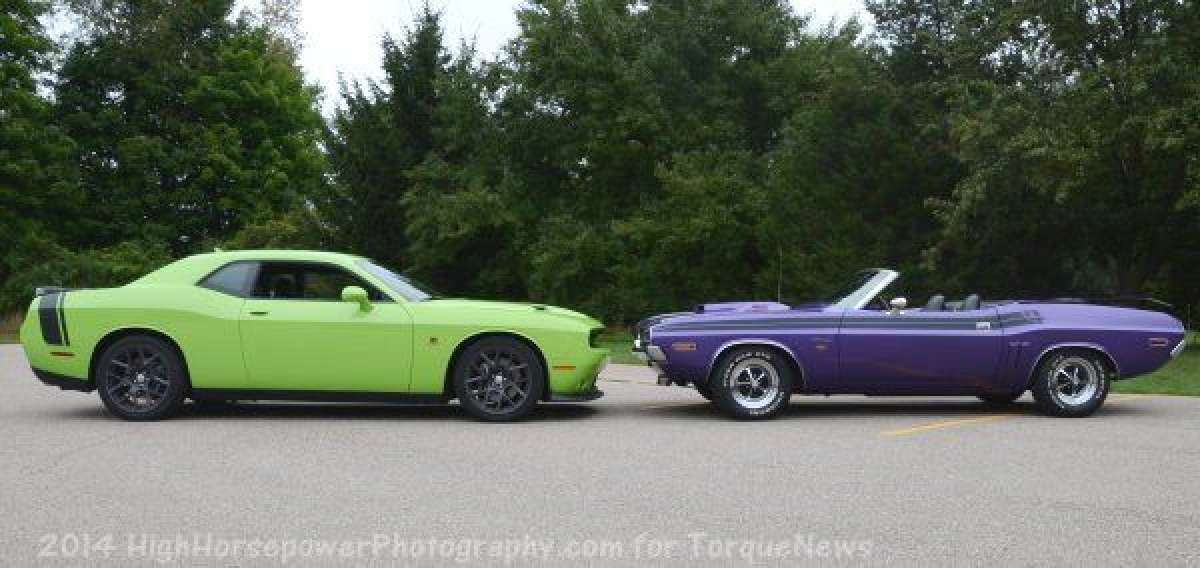
The 2015 Challenger has a body design that reaches much further to the ground where the 1971 Challenger body panels curve under more quickly and in addition to the massive difference in wheel sizes, those are the key differences between the two Challengers from the side view. Really, this side view leaves no question that these cars share the same design language.
The Rear View
While the rear ends of the 2015 Dodge Challenger Scat Pack and the 1971 Dodge Challenger R/T are where the cars really differ the most, even this area has obvious similarities in design. One of the key changes to the 2015 Challenger is the dual taillight setup, which is different from the 1971 in the way that the new model has an elongated reverse indicator in the middle of the lens while the old school model had only a small white section in the center. There is also the fact that the new Challenger’s taillights are LED powered, but you can definitely see the likeness between the lights.
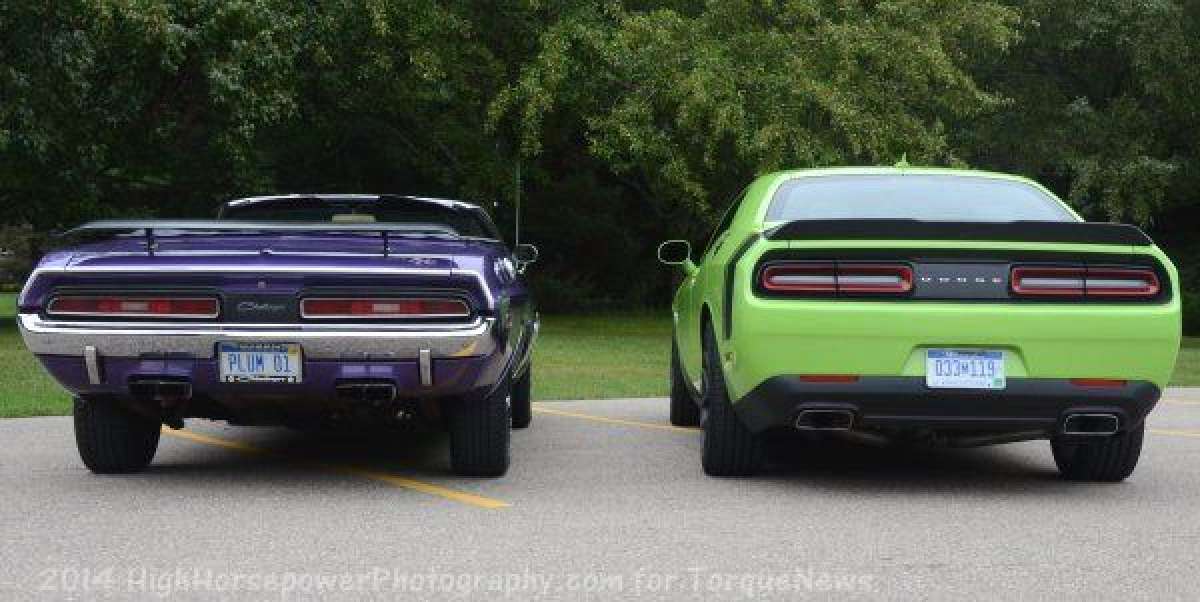
The key difference, which is more than obvious, is the overall size of the rear end of the 2015 Challenger. The new back end sits much higher and it has a much larger surface area. The license plate is in the same place and the dual rectangular taillights are similar between the two Challengers, but the rear view really shows how much the industry standard has changed in the last 40+ years.
While the 2015 Dodge Challenger Scat Pack is a much larger car in its overall appearance, these images demonstrate just how well the Chrysler Group engineers have translated the exterior design of the 1971 Challenger to fit on a modern muscle car. These similarities play a big role in the passion that long time Mopar fans have for the new Challenger, while the lineup of powerful engines and the aggressive styling helps bring new drivers to the Dodge brand every day.
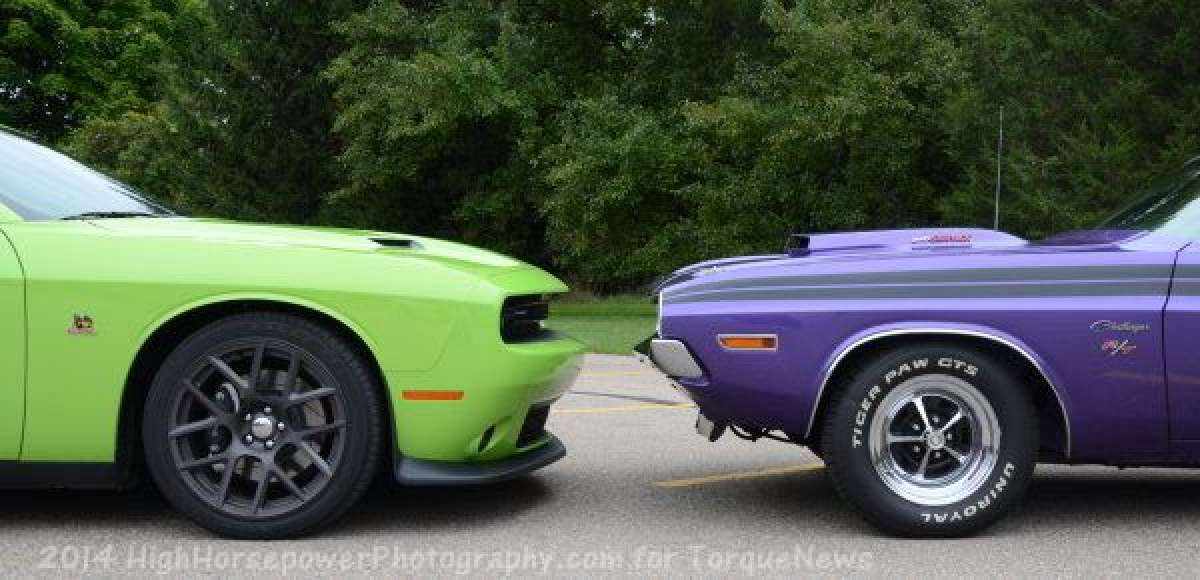
Click any of the thumbnails at the top of the article for a closer look at the pictures of these two Mopar muscle cars side by side and head to head.
A special thanks to John Dorset for his time and the use of his beautiful 1971 Dodge Challenger R/T Convertible.






Comments
I'm very much thinking of a
Permalink
I'm very much thinking of a 2013 or 14 Challenger but with real chrome bumpers. Can you assist me with the right type of bumper for the front and the rear, similar to the 1971 but the bumper has to be much bigger if you can understand what I mean. In addition the plastic fascia have to be modified to accommodate the bumper with the rest of the car. Its a thought that if I can do it, it will be awesome. A 2013 retro like the seventies.......